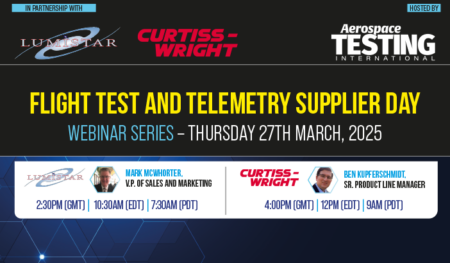
Exposure to the high vacuum level of a space environment induces material outgassing in ordinary accelerometers and cables. Any substance subjected to a vacuum has the potential to release trapped gasses. Contaminants from outgassing can condense onto nearby surfaces, obscuring them and rendering them useless during their intended application.
During random vibration, swept sine or shock testing prior to flight, spacecraft payloads are often fitted with accelerometers in hard to reach mounting locations. As the space structure is built up around them, it can become impossible to remove the accelerometers. Sensors installed for ground vibration testing may therefore remain on the structure—even if they are no longer needed for testing purposes.
For this reason, prior to vibration testing, thermal vacuum environments require the selection of accelerometers and cables that have been designed for low outgassing properties in accordance with the report NASA RP-1124, “Outgassing Data for Selecting Spacecraft Materials.”
This webinar provides an overview of approved accelerometer design and testing practices used to achieve hermeticity and satisfy ASTM restrictions on TMP (total mass loss) and CVCM (collected volatile condensable mass) when exposed to a thermal vacuum environment. A case study of PCB Model 356M98, cables and hermetic feed-thru connectors for vibration testing on the Suomi NPP Satellite demonstrates additional precautions that may be taken to ensure that low outgassing requirements are met.
You will learn:
- How to select appropriate accelerometers and cables to meet low outgassing requirements for vibration testing in a thermal vacuum environment.
- A review of methods used in accordance with MIL-STD-883E to qualify welded hermetic accelerometers for use in a vacuum, including bubble testing and fine leak helium testing using mass spectrometry.
- The structural advantages of shear mode, triaxial accelerometer design for harsh vibration applications.
- Materials tested by NASA to ASTM E 595 standards to meet low outgassing restrictions for the construction of miniature accelerometers and cables that do not lend themselves to hermetic welding.
- A case study demonstrating the use of PCB 365M98 with low outgassing cables and connectors for vibration testing on the Suomi NPP Satellite.
Presenters

Bob Metz
Business Development Manager, Aerospace & Defense Division at PCB Piezotronics, Inc. and Endevco
Bob holds a Bachelor of Science degree in Aeronautical and Astronautical Engineering from The Ohio State University and a Master of Business Administration from the State University of New York. Bob has been an instrumentation engineer for 25 years, focusing on acoustic, vibration, pressure and force measurement using piezoelectric sensors, and is currently the Director of the Aerospace & Defense Division of PCB Piezotronics and Endevco.

Ben Sampson
Editor, Aerospace Testing International
Ben has worked as a journalist and editor, covering almost all aspects of technology, engineering and industry for the last 20 years. Initially writing about subjects from nuclear submarines to autonomous cars to future design and manufacturing technologies, he was editor of a leading UK-based engineering magazine before becoming editor of Aerospace Testing in 2017.





